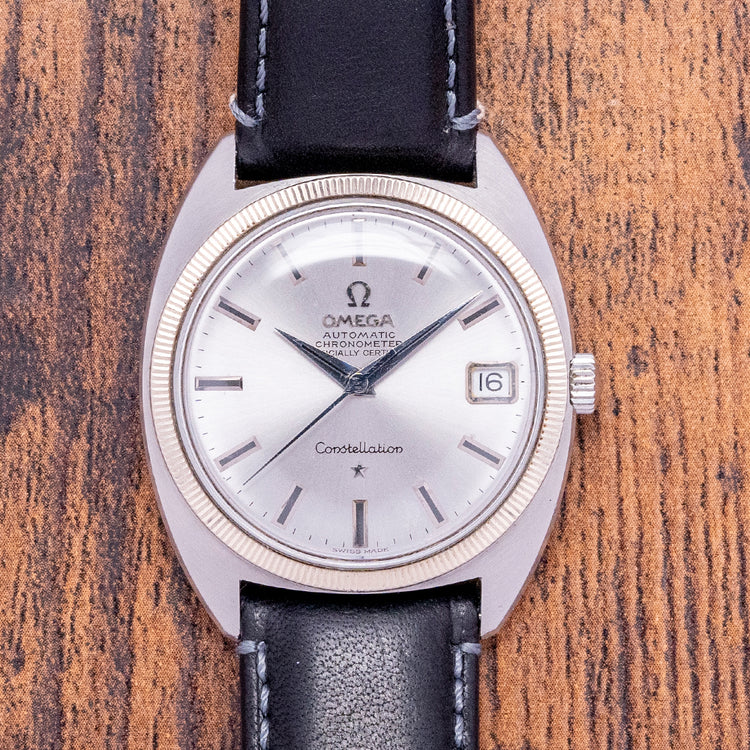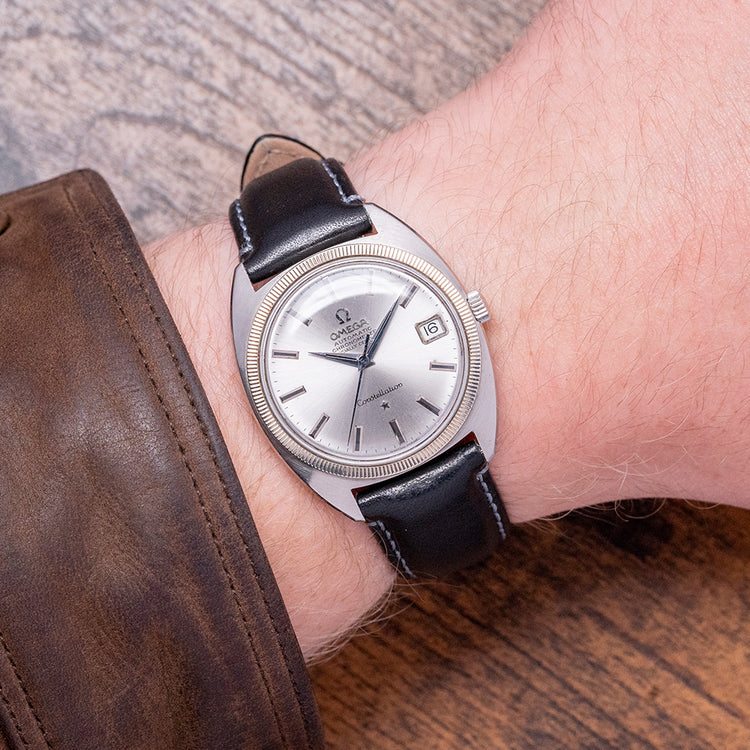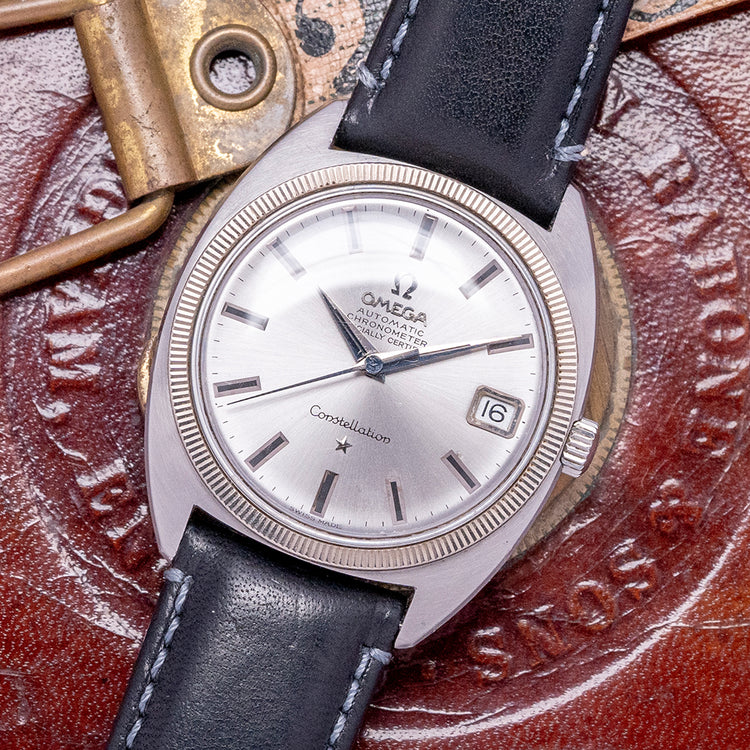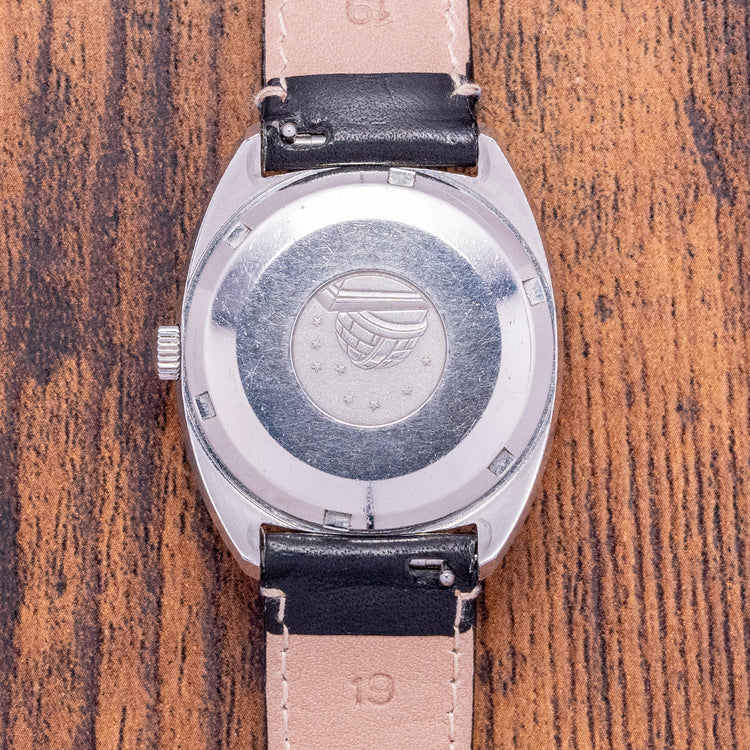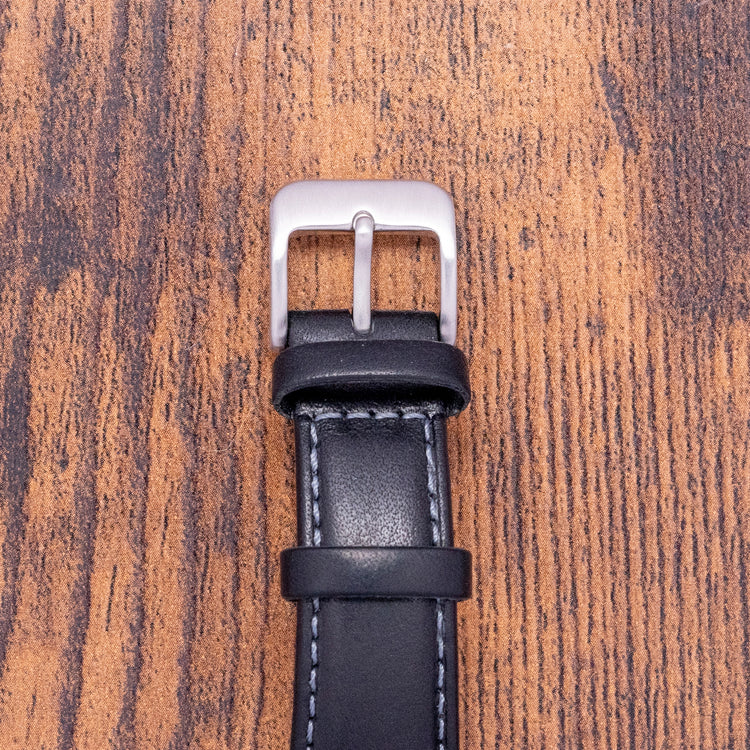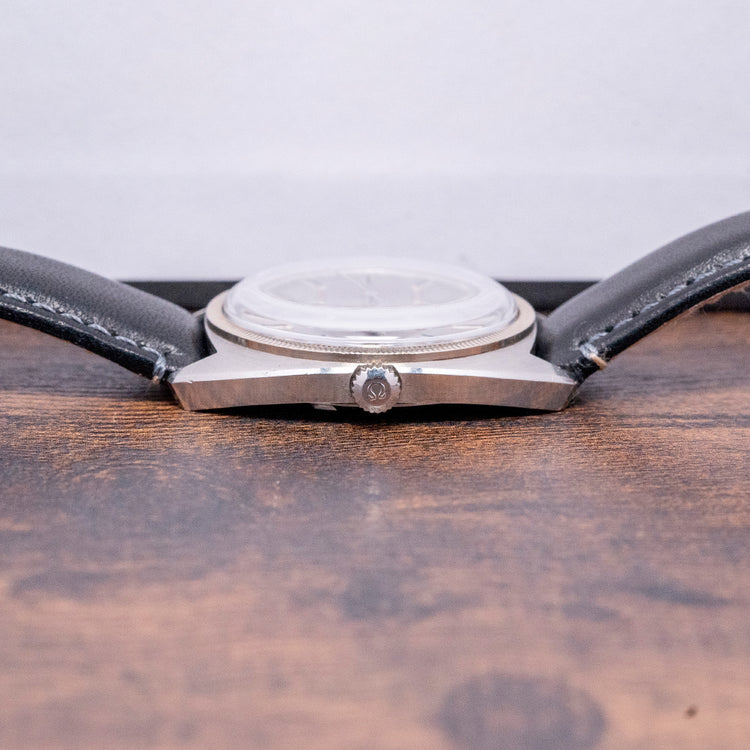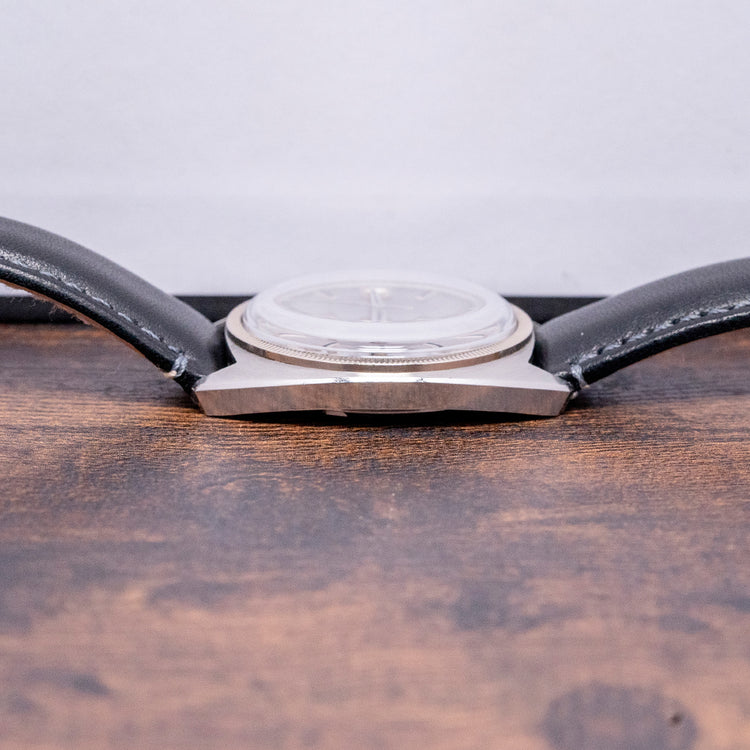More Information
Description
More
Less
Here we have a classic 1968 Omega Constellation C-Case 168.027 with a satin-brushed and polished 34.5mm stainless steel C-shaped case comfortably sitting on your wrist like a cushion. Omega first introduced the Constellation in 1952, at the time, it was Omega's flagship timepiece; the first models had a Cal. 354 bumper movement in them. Later, in 1955, Omega introduced the Automatic Cal. 50x, followed in 1959 by the Cal.55x (no date) and 56x (date) versions. Many of the Constellations came with pie-pan dials, diamond indexes, and fancy lug configurations, and all the gold Constellations of that time had the Observatory of Geneva's hand engraved on the back. The stainless steel and stainless steel/gold versions had a gold medallion on the back with the Observatory of Geneva; the eight stars above the Observatory stand for the many exploits of Omega in the world Chronometer competition, celebrating the fact that all Constellations are Chronometer Certified. In 1964, Omega introduced its first Constellation with the “C” case; due to the case resembling two mirrored Cs, the “C” case was a modern move away from the popular round Constellations of the 1950s. The curvaceous flanks have a polished bevel edge leading to a lug-to-lug length of 40.5mm and a case thickness of 10mm, ensuring a comfortable fit on your wrist. An attractive slim white gold fluted bezel holds the domed crystal above a silver dial with an outer minute track surrounding applied chamfered edge baton indexes that play with the light as you rotate your wrist. At 3 o’clock, a framed date window. Slender Dauphine hands are complemented with a tapered centre second hand. At 12 o’clock, an applied Omega and “Automatic Chronometer Officially Certified” printed in black. Below at 6 o'clock, “Constellation” and an applied star complete this sophisticated dress watch. On the reverse, there is a screw-down case back with an embossed observatory and eight stars, inside an automatic Omega Cal. 564, 24 jewels, 19,800 beats per hour. The watch comes paired with a suitable 19mm leather strap and a pin buckle.
Points of Mention
More
Less
Personal Note
More
Less
Specification
More
Less
Movement : Automatic Omega Cal. 564
Age : Circa. 1968
Year : 1968
Case Size : 40mm
Case Thickness : 10mm
Lug to Lug : 40.5mm
Lugs : 19mm
Condition : Pre-Owned
Box and Papers : None
Case Material : Stainless Steel
Warranty : 12-Months NON-Waterproof Warranty
The wrist model's wrist size is 7inch
About Omega
More
Less
Description
Here we have a classic 1968 Omega Constellation C-Case 168.027 with a satin-brushed and polished 34.5mm stainless steel C-shaped case comfortably sitting on your wrist like a cushion. Omega first introduced the Constellation in 1952, at the time, it was Omega's flagship timepiece; the first models had a Cal. 354 bumper movement in them. Later, in 1955, Omega introduced the Automatic Cal. 50x, followed in 1959 by the Cal.55x (no date) and 56x (date) versions. Many of the Constellations came with pie-pan dials, diamond indexes, and fancy lug configurations, and all the gold Constellations of that time had the Observatory of Geneva's hand engraved on the back. The stainless steel and stainless steel/gold versions had a gold medallion on the back with the Observatory of Geneva; the eight stars above the Observatory stand for the many exploits of Omega in the world Chronometer competition, celebrating the fact that all Constellations are Chronometer Certified. In 1964, Omega introduced its first Constellation with the “C” case; due to the case resembling two mirrored Cs, the “C” case was a modern move away from the popular round Constellations of the 1950s. The curvaceous flanks have a polished bevel edge leading to a lug-to-lug length of 40.5mm and a case thickness of 10mm, ensuring a comfortable fit on your wrist. An attractive slim white gold fluted bezel holds the domed crystal above a silver dial with an outer minute track surrounding applied chamfered edge baton indexes that play with the light as you rotate your wrist. At 3 o’clock, a framed date window. Slender Dauphine hands are complemented with a tapered centre second hand. At 12 o’clock, an applied Omega and “Automatic Chronometer Officially Certified” printed in black. Below at 6 o'clock, “Constellation” and an applied star complete this sophisticated dress watch. On the reverse, there is a screw-down case back with an embossed observatory and eight stars, inside an automatic Omega Cal. 564, 24 jewels, 19,800 beats per hour. The watch comes paired with a suitable 19mm leather strap and a pin buckle.
Points of Mention
Personal Note
Specification
The Brand
Enquire or Book an Appointment
Would you like to discover further details about this watch, or perhaps arrange an appointment to view and try it on? Complete this form and a member of our team will get back to you shortly.
You May Also Like




















